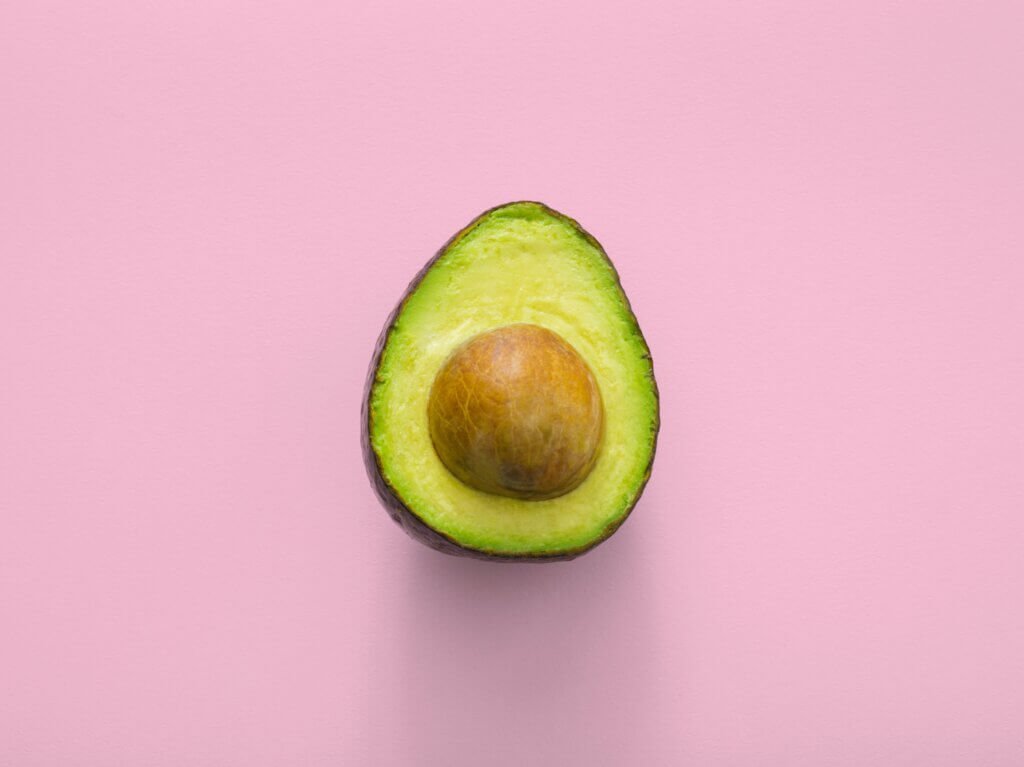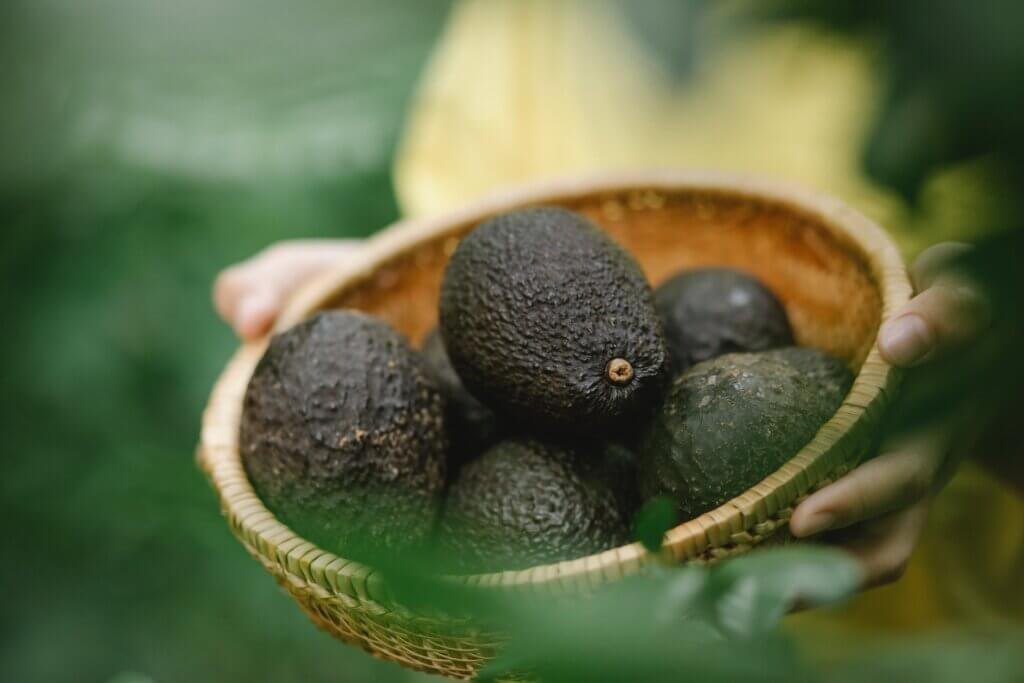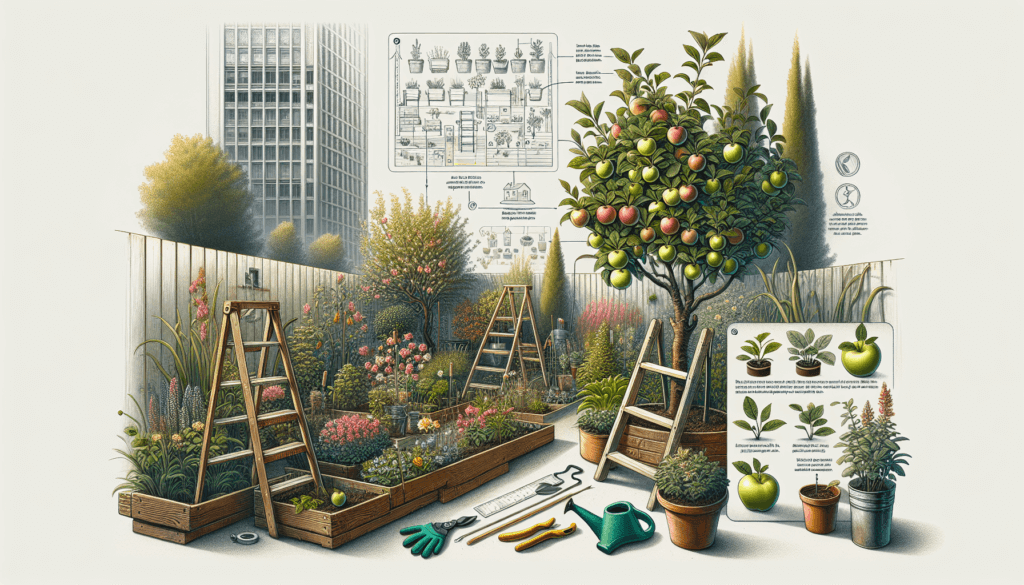Imagine having your own mini orchard right in your own urban garden. With just a little bit of knowledge and effort, you can easily grow your very own miniature fruit tree. Whether it’s a compact apple tree, a petite lemon tree, or even a dwarf peach tree, these small but mighty plants are the perfect addition to any city dwelling. In this article, we will guide you through the process of growing a miniature fruit tree in your urban garden, so you can enjoy the taste of homegrown fruits without needing a large plot of land.

Choosing the Right Tree
Consider the Available Space
When selecting a fruit tree for your urban garden, it is essential to consider the available space. In an urban setting, space is often limited, so it is crucial to choose a tree that will fit comfortably within the constraints of your garden. Consider both the height and spread of the tree to ensure it will not overcrowd other plants or structures.
Choose a Tree Suitable for Your Climate
Another vital factor to consider when choosing a fruit tree is the climate in your area. Different fruit trees thrive in different climates, so it is crucial to select a tree that is suitable for the specific conditions of your region. Consider the average temperature range, frost dates, and the number of chill hours required for the tree to produce fruit successfully.
Select the Right Fruit Variety
There is a wide variety of fruit trees available, each with its unique characteristics. When selecting a fruit tree for your urban garden, consider your personal preferences regarding taste, texture, and the specific uses you have in mind for the fruit. Additionally, consider the size of the tree and the yield it will produce to ensure it aligns with your expectations.
Preparing the Soil
Assess the Soil Quality
Before planting your miniature fruit tree, it is essential to assess the quality of your soil. Conduct a soil test to determine the pH level and nutrient content. This will help you understand if any amendments or adjustments are necessary to create an optimal environment for your tree to thrive.
Improve Drainage
Proper soil drainage is crucial for the health of your fruit tree. If your soil tends to be heavy or compacted, consider improving drainage by incorporating organic matter such as compost or peat moss. This will help prevent waterlogging and ensure that the tree’s roots have access to sufficient oxygen.
Test Soil pH
Different fruit trees have specific pH requirements for optimum growth and fruit production. Test your soil’s pH level and make any necessary adjustments to ensure it falls within the ideal range for your chosen fruit tree. Adding amendments such as lime or sulfur can help raise or lower the pH as needed.
Add Organic Matter
Enhancing the fertility of your soil with organic matter is crucial for the overall health of your fruit tree. Organic matter improves soil structure, provides essential nutrients, and enhances moisture retention. Incorporate well-rotted compost, leaf mold, or aged manure into the soil to promote a healthy growing environment.
Consider Container Gardening
If your urban garden lacks suitable soil or space for a traditional fruit tree, consider growing your miniature fruit tree in a container. Container gardening allows you to have more control over the soil quality, drainage, and positioning of the tree. Choose a container of appropriate size and ensure it has adequate drainage holes.

Planting the Tree
Selecting the Right Container
If you opt for container gardening, selecting the right container is essential. Choose a container that is large enough to accommodate the root system of your fruit tree while allowing room for growth. Ensure the container has drainage holes to prevent waterlogging, and consider using a lightweight, durable material such as fiberglass or plastic.
Choose the Right Planting Time
The ideal planting time for your miniature fruit tree will depend on the specific variety and your climate. Generally, it is best to plant fruit trees in the early spring when the soil is moist and temperatures are moderate. However, consult the specific guidelines for your chosen fruit tree to determine the optimal planting time.
Prepare the Container
Before planting your miniature fruit tree in a container, ensure it is clean and free from any debris or pathogens. Line the bottom of the container with a layer of small stones or broken pottery to aid in drainage. Fill the container with a well-draining potting mix, leaving enough space at the top for watering.
Transplanting the Tree Properly
When transplanting your miniature fruit tree into its permanent location, handle the tree with care to avoid damaging the roots. Dig a hole slightly larger than the root ball and gently place the tree into the hole, ensuring it is at the same depth as it was in the original container. Backfill the hole with soil, firming it gently around the tree’s base. Water the tree thoroughly to settle the soil and remove any air pockets.
Providing Adequate Sunlight
Identify Sun Requirements
Different fruit tree varieties have varying sun requirements. Some trees thrive in full sun, while others may tolerate partial shade. It is crucial to understand your chosen fruit tree’s specific sun requirements to ensure it receives the optimal amount of sunlight for healthy growth and fruit production.
Ensure Sufficient Sun Exposure
In an urban garden, access to direct sunlight may be limited due to surrounding buildings or trees. To ensure your miniature fruit tree receives sufficient sun exposure, position it in the garden where it will receive the most sunlight throughout the day. Observe the garden during different times to determine the best location for your tree.
Consider Artificial Lighting
If your urban garden has limited sun exposure, consider supplementing natural light with artificial lighting. LED grow lights can provide the necessary spectrum of light for your fruit tree’s photosynthesis process. Place the lights above the tree at the appropriate distance and follow the recommended lighting schedule for optimal growth.

Watering and Fertilizing
Determine Watering Needs
Proper watering is crucial for the health and productivity of your miniature fruit tree. The amount of water required will vary depending on the tree’s age, the weather conditions, and the soil type. Monitor the soil moisture regularly and water when the top inch of soil feels dry. Avoid overwatering, as it can lead to root rot and other moisture-related issues.
Watering Techniques
When watering your fruit tree, aim to provide deep, thorough irrigation rather than frequent, shallow watering. This encourages the tree’s roots to grow deep into the soil and makes it more resilient to drought conditions. Use a drip irrigation system or a soaker hose to deliver water directly to the tree’s root zone, minimizing water loss.
Fertilization Basics
To ensure your miniature fruit tree receives the necessary nutrients for healthy growth and fruit production, regular fertilization is essential. Use a balanced fertilizer specifically formulated for fruit trees and follow the package instructions for application rates. Apply the fertilizer evenly around the tree’s dripline, avoiding direct contact with the trunk.
Choosing the Right Fertilizer
When selecting a fertilizer for your fruit tree, consider the tree’s specific nutrient requirements. Fruit trees typically require higher amounts of potassium and phosphorus for fruit production. Choose a fertilizer with a balanced NPK ratio, such as 10-10-10 or 14-14-14, to provide the necessary nutrients for optimal growth and fruit development.
Pruning and Training
Understand Pruning Objectives
Pruning is a vital practice for shaping and maintaining the health of your miniature fruit tree. It helps control the tree’s size, improves airflow and light penetration, and promotes fruit production. Understand the specific pruning objectives for your chosen fruit tree, such as removing dead or diseased wood, shaping the tree, or promoting branching.
Prune During Dormant Season
The best time to prune your miniature fruit tree is during its dormant season, typically in late winter or early spring before new growth starts. During this period, it is easier to identify the tree’s structure and make necessary pruning cuts without inhibiting its growth. Avoid pruning during periods of active growth, as it may stress the tree and reduce fruit production.
Remove Dead or Damaged Branches
Regularly inspect your miniature fruit tree for any dead, diseased, or damaged branches. These branches can attract pests or disease, and removing them will help maintain the tree’s overall health. Use sharp pruning shears or loppers to make clean, angled cuts just outside the branch collar.
Training Techniques
Training your miniature fruit tree involves shaping it to a desired form and encouraging proper branch distribution. Use pruning techniques such as heading cuts, thinning cuts, and training against a support structure, such as a trellis or espalier. Regularly monitor the tree’s growth and adjust its training as necessary.

Disease and Pest Management
Identify Common Diseases
Fruit trees are susceptible to various diseases, including fungal infections, bacterial diseases, and viral infections. Learn to identify common diseases that affect your chosen fruit tree and monitor for any signs of infection. Common diseases include apple scab, peach leaf curl, and citrus canker.
Preventive Measures
Prevention is key to managing diseases in your miniature fruit tree. Keep the tree and its surroundings clean by removing fallen leaves, fruit, and other debris. Maintain proper spacing between plants to promote airflow and reduce moisture buildup. Prune the tree regularly to remove any infected or dead wood, and use disease-resistant varieties whenever possible.
Organic Pest Control
Controlling pests in an urban garden is essential to ensure the health and productivity of your miniature fruit tree. Consider using organic pest control methods, such as physical barriers, insecticidal soaps, neem oil, or beneficial insects. These methods minimize the use of chemical pesticides and promote a more sustainable garden environment.
Integrated Pest Management
Implementing an integrated pest management (IPM) approach can help manage both diseases and pests effectively. IPM combines various strategies, such as cultural practices, biological controls, and chemical controls, to minimize the impact of pests while minimizing harm to beneficial insects and the environment. Regularly monitor your tree for pest activity and take appropriate action when necessary.
Harvesting the Fruit
Recognize Fruit Ripeness
Proper timing is crucial when it comes to harvesting the fruit from your miniature fruit tree. Each fruit variety has specific signs indicating ripeness, such as color changes, firmness, and fragrance. Become familiar with these indicators for your chosen fruit and harvest at the optimal stage to enjoy the best flavor and texture.
Harvesting Techniques
When harvesting fruit from your miniature fruit tree, handle the fruit with care to avoid any bruises or damage. Use sharp pruning shears or garden scissors to make clean cuts when picking the fruit. Hold the fruit gently to avoid squeezing or dropping and place it in a basket or container lined with soft padding.
Storing and Preserving the Fruit
If you have an abundant harvest from your miniature fruit tree, you may need to store or preserve the fruit for later use. Follow specific guidelines for each fruit variety, but generally, it is best to store fruit in a cool, dark place or in the refrigerator. Consider preserving techniques such as canning, freezing, or making jams and jellies to enjoy the fruit throughout the year.

Maintaining Tree Health
Regular Monitoring
Regularly monitoring your miniature fruit tree is essential to ensure its ongoing health and productivity. Observe the leaves, branches, and fruit for any signs of disease, pests, or nutrient deficiencies. Monitor the soil moisture and adjust watering as needed. By staying vigilant, you can address any issues promptly and help maintain the tree’s overall health.
Addressing Problems Promptly
If you notice any problems with your miniature fruit tree, such as pest infestations, nutrient deficiencies, or disease symptoms, it is crucial to address them promptly. Seek advice from local gardening resources or consult with a certified arborist for proper diagnosis and treatment recommendations. Taking swift action will help prevent further damage and promote the tree’s recovery.
Annual Maintenance Tasks
To keep your miniature fruit tree in optimal condition, incorporate annual maintenance tasks into your gardening routine. This may include pruning during the dormant season, fertilizing at the appropriate times, and monitoring for pests and diseases. Regularly inspect the tree for any signs of stress or decline and take appropriate action as needed.
Winter Care
In colder climates, winter care is crucial for the survival of your miniature fruit tree. Protect the tree from freezing temperatures by wrapping the trunk with burlap or using protective covers. Mulch the base of the tree with a layer of organic matter to insulate the roots. Avoid pruning during the winter, as it may stimulate new growth that is susceptible to frost damage.
Conclusion
Growing a miniature fruit tree in your urban garden can be a rewarding experience. By following the steps outlined in this article, you can choose the right tree, prepare the soil, plant it properly, provide adequate sunlight, and care for it throughout its lifespan. With proper maintenance and attention to detail, your miniature fruit tree will thrive and provide you with delicious fruit for years to come. Happy gardening!


